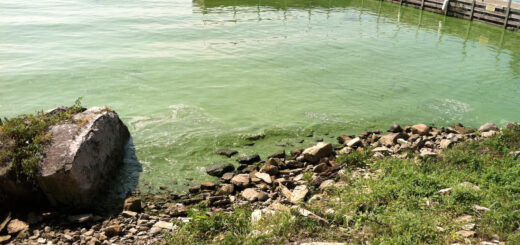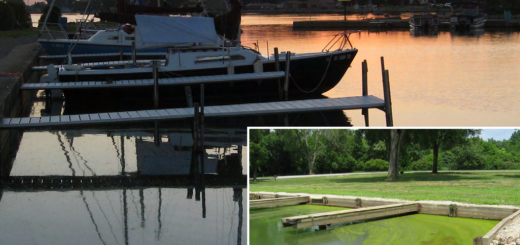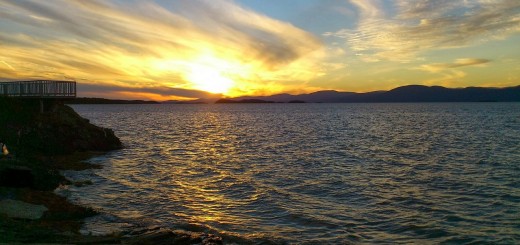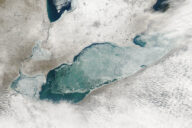Research Summary: Long-Term, Citizen-Collected Data Reveal Geographical Patterns and Temporal Trends in Lake Water Clarity
0In freshwater ecosystems, Secchi depth is the indicator of water quality with the longest history of standardized measurement by scientists and citizens alike [1-3]. The first transparency measurements were made in the ocean during the early 1800s, followed by more careful investigations by Pietro Angelo Secchi in the mid 1800s, which led to his recognition as the method’s founder [3]. Water clarity is easy and inexpensive to measure using a Secchi disk, and comparisons have shown that citizen-collected readings are nearly identical to those taken by professionals [4,5]. Consequently, the frequent, citizen-collected Secchi depth readings that are publicly available online (e.g., Secchi Dip-In; http://www.secchidipin.org) often span multiple decades for individual lakes and can be used to complement data collected by state and federal agencies.
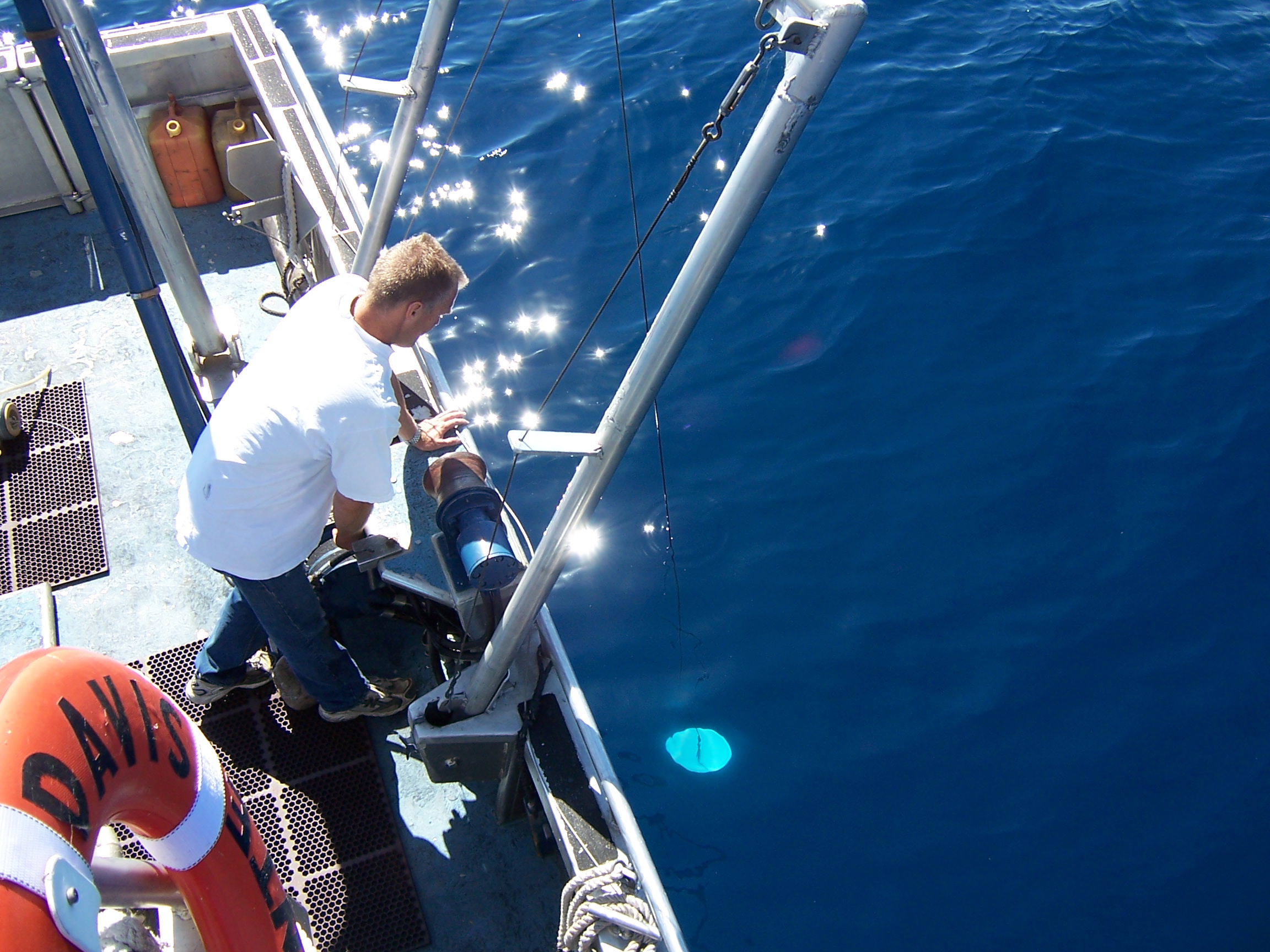
Tahoe Environmental Research Center boat captain Brant Allen conducts a Secchi Disk measurement in Lake Tahoe. (Credit: Geoff Schladow, Tahoe Environmental Research Center at University of California, Davis)
Methods
We compiled citizen-collected, publically available Secchi depth measurements to answer two questions: (1) what are the long-term trends in lake-water clarity across a broad geographic region?; and (2) how do trends differ as a function of spatial location, lake size, and time? To our knowledge, this is the first study to look at such large-scale, long-term water clarity trends. Our dataset used (1) a broad spatial extent (eight states with a total land area greater than 1.1 million km2 in the Upper Midwest region of the United States), (2) a long temporal window (1938-2012), and (3) a large number of lakes (>3,000), and (4) publically-available citizen- collected Secchi depth measurements (>140,000). We answered our two research questions using Bayesian hierarchical modeling, an approach that is useful because it can incorporate disparate data from multiple sources to examine relationships across multiple spatial and temporal extents [6,7]. Our results can be used as a basis for forming hypotheses to test the mechanisms driving large-scale spatial patterns and temporal trends in water clarity as well as informing local, regional, or federal policies and management actions.
Results
Average lake specific summer Secchi depth for the 3,251-study lake population covered a wide range, from 0.2 to 16 m, with a sample mean of 2.4 m (median 2.1 m). For a majority of lakes (75%) the year-to-year variability of Secchi depth values within a specific lake was small (coefficient of variation < 30%). However, at the population-level, the range was large (coefficient of variation between 6.5 and 184%).
For the entire lake population, temporal trends in Secchi depth from 1938 to 2012 were positive (average increase of 0.92% per year). On an individual lake basis, however, there was little evidence for long-term increases or decreases in water clarity for a majority of lakes. Of the 3,251 lakes examined, 128 (3.8%) and 224 (6.9%) had a 90% or greater probability of long-term declines or increases in Secchi depth, respectively.
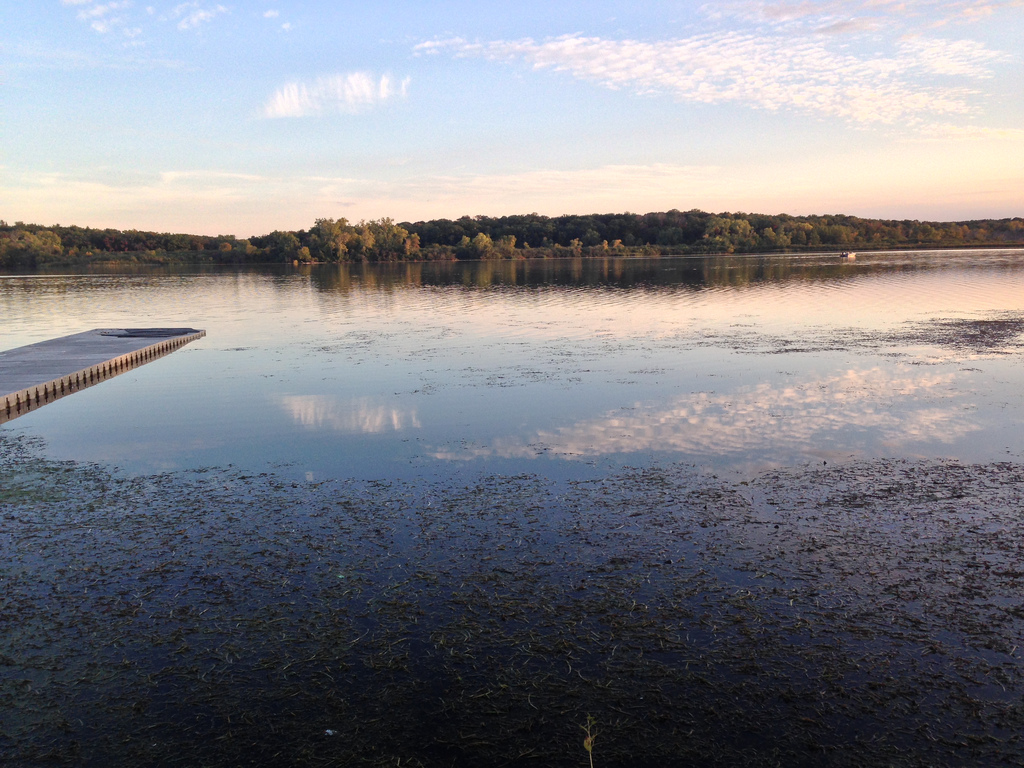
Lake Winagra. (Credit: Wisconsin Department of Natural Resources)
Lake size was not related to average annual summer Secchi depth, long-term Secchi depth trend, or inter-annual variability in Secchi depth. However, we found relationships between these response variables and the latitude of the monitored lake. Average annual summer Secchi depth and long-term trend slope increased and inter-annual variability in Secchi decreased across the southern to northern latitudinal gradient. In addition to detecting spatial patterns in Secchi trends, we found that trends were related to when the data were collected within the time interval of 1938-2012 (i.e., the median year of sample collection). Median sample data was negatively related to both long-term Secchi depth trend and inter-annual variability. These results suggest that historical records were characterized by more positive annual Secchi depth trends relative to records collected more recently and that inter-annual variability of Secchi depths was greater historically than what is observed from more current records. There was no evidence that relationships were due to differences in the water clarity of lakes being monitored by citizen volunteers over time, which has not changed.
Discussion
Although there has been a long history of examining water clarity trends and patterns augmented with citizen-collected data, the results presented here use citizen-collected data exclusively. We incorporate over 140,000 citizen-monitoring water clarity values, extending back to 1938, collected at greater spatial and temporal scales than any previous study of which we are aware. It is impossible for aquatic management organizations to monitor all lakes all the time; citizen water clarity data have been critical in augmenting traditional agency monitoring efforts and providing vital data for identifying and understanding water quality patterns at broad spatial and temporal scales (e.g., calibration of satellite-derived water clarity estimates). Here, we demonstrate the effectiveness of citizen data for quantifying long-term water clarity trends in individual lakes and identifying compelling population-level patterns in lake water clarity at the macro-scale. In an era of limited resources and during a push toward applying data-intensive science to environmental management and policy, the importance of citizen data such as these is likely to increase. Therefore, there is a clear need to continue to learn how to effectively leverage these types of data in the future.
Citizen science affords a unique opportunity to obtain data at unprecedented spatial and temporal scales, but we generally lack the large, multi-thematic data necessary to explain these patterns. Consequently, there is a need to compile multi-thematic data across multiple spatial and temporal scales in order to link patterns observed at local and regional scales to processes occurring across the landscape. We believe that collaborations among citizens, research scientists, and local, state and national agencies are important for developing the data sources and analytical tools necessary to move beyond identifying patterns and toward an understanding of the critical factors influencing macro-scale patterns such as those shown here for lake water clarity.
Full study published in PLOS ONE, April 2013.
References
- Lathrop RC, Carpenter SR, Rudstam LG (1996) Water clarity in Lake Mendota since 1900: responses to differing levels of nutrients and herbivory. Can J Fish Aquat Sci 53: 2250–2261
- Bruhn LC, Soranno PA (2005) Long Term (1974-2001) Volunteer monitoring of water clarity trends in Michigan lakes and their relation to ecoregion and land use/cover. Lake Reserv Manag 21: 10–23
- Wernand MR (2010) On the history of the Secchi disc. JEOS:RP 5: 10013s doi:10.2971/jeos.2010.10013s
- Obrecht DV, Milanick M, Perkins BD, Ready D, Jones JR (1998) Evaluation of data generated from lake samples collected by volunteers. Lake Reserv Manag 14: 21–27. doi:10.1080/07438149809354106
- Canfield DE Jr., Brown CD, Bachmann RW, Hoyer MV (2002) Volunteer lake monitoring: testing the reliability of data collected by the Florida LAKEWATCH Program. Lake Reserv Manag 18: 1–9 doi:10.1080/07438140209353924
- Stow CA, Lamon EC, Qian SS, Soranno PA, Reckhow KH (2009) Bayesian hierarchical/multilevel models for inference and prediction using cross-system lake data. In: Miao S, Carstenn S, Nungesser MK, editors. Real world ecology: large-scale and long-term case studies and methods. New York: Springer. pp. 111–136 doi:10.1007/978-0-387-77942-3_5
- Qian SS, Cuffney TF, Alameddine I, McMahon G, Reckhow KH (2010) On the application of multilevel modeling in environmental and ecological studies. Ecology 91: 355–361




